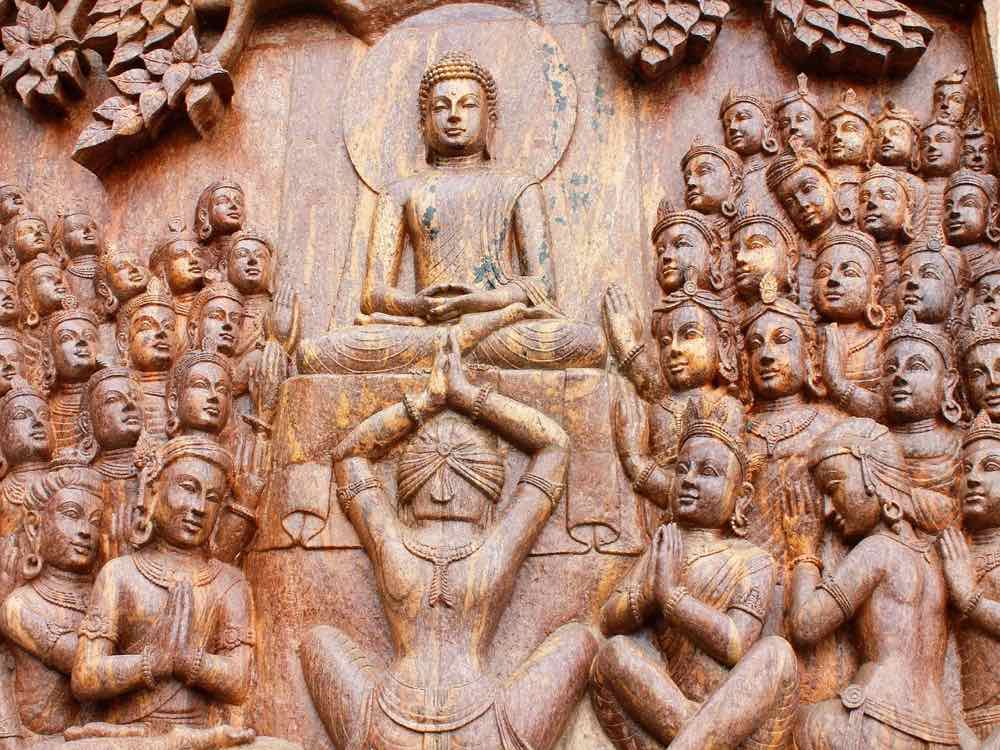History of Meditation

The history of meditation goes as far back as humanity started the journey to self awareness. So where and how did meditation start and develop in history? What is the origin of meditation? Let's start to look at the word meditation and it's origin and see if we can find some clues.
Origins of Meditation
The word meditate stems from the Latin root meditatum, i.e. to ponder. In the old Testament it means to sigh or murmur, but also to meditate. When the Hebrew Bible was translated into Greek, hāgâ became the Greek melete. The Latin Bible then translated hāgâ/melete into meditatio. The use of the term meditatio as part of a formal, stepwise process of meditation goes back to the 12th century monk Guigo II.
Records Found in the History of Meditation
- Researchers speculate that primitive hunter-gatherer societies may have discovered meditation and its altered states of consciousness while staring at the flames of their fires.
- We have found records
of older prehistoric civilizations that practiced 'meditation' in the
form of repetitive and rhythmic chanting, prayers and offerings to
please the Gods. This is as close we get to the origins of meditation.
- Tantric meditation developed by South India tribes between ten and fifteen thousand years ago, was an expression of the desire to understand the conscious mind.
- Tantric meditation after being further developed seven thousand years ago by the yogi Shiva, became an integral part of Taoism, Buddhism, the Tibetan and Zen varieties and Sufism.
- Indian scriptures called “tantras” mentioned meditation techniques 5000 years ago.
- Meditation is also practiced and mentioned in the Hindu Vedantism which dates back to 1500 BC.
- Buddha found enlightenment in and around 500 BC, and brought forth Buddhist meditation which many of us associate meditation with Buddha. But the History of Meditation began far before that.
- Around 600 BC Taoist in China began developing meditation practices as did the Buddhist's in India, 100 years later.
- The Pāli Canon, which dates to 1st century BCE considers Indian Buddhist meditation as a step towards salvation. By the time Buddhism was spreading in China, the Vimalakirti Sutra which dates to 100 CE included a number of passages on meditation, clearly pointing to Zen.
- The Silk Road played an important role in the history of meditation. Besides silk and other goods, the silk road also brought Buddhist meditation to other oriental countries.
- In Japan the first meditation hall opened in 653.
- Returning from China around 1227, Dōgen wrote the instructions for Zazen.
- The Islamic practice of Dhikr meditates with the repetition of the 99 Names of God in the Qur'an since the 8th or 9th century.
- Between the 10th and 14th centuries, hesychasm was developed, particularly on Mount Athos in Greece, and involves the repetition of the Jesus prayer.
- By the 12th century, the practice of Sufism recorded specific meditative techniques, and its followers practiced breathing controls and the repetition of holy words.
- Western Christian meditation progressed from the 6th century practice of Bible reading among Benedictine monks called Lectio Divina, i.e. divine reading.
- Its four formal steps as a "ladder" were defined by the monk Guigo II in the 12th century with the Latin terms ''lectio'', ''meditatio'', ''oratio'', and ''contemplatio'' (i.e. read, ponder, pray, contemplate).
- Western Christian meditation was further developed by saints such as Ignatius of Loyola and Teresa of Avila in the 16th century.
- Meditation was indeed for a long time deeply rooted and popular in the East before it began spreading in the West much much later. Only in the middle of the 20th Century began meditation it's journey of popularity in the West.
- Over the last 10 years meditation has been demystified and taken out of religious context. Also the effects and benefits have been scientifically proven which for the first time in the history of meditation, makes the practice a known activity to every household in the west.





